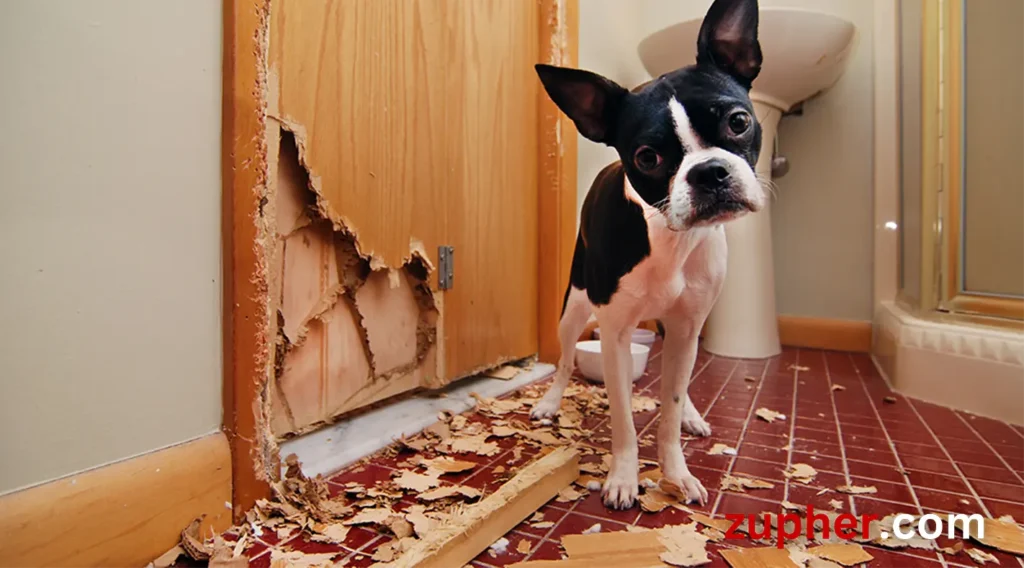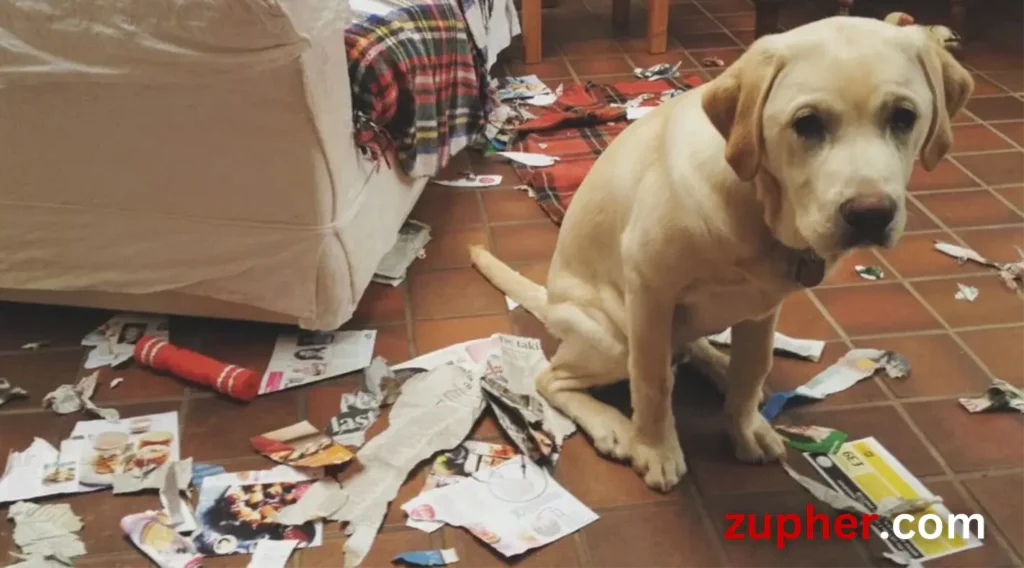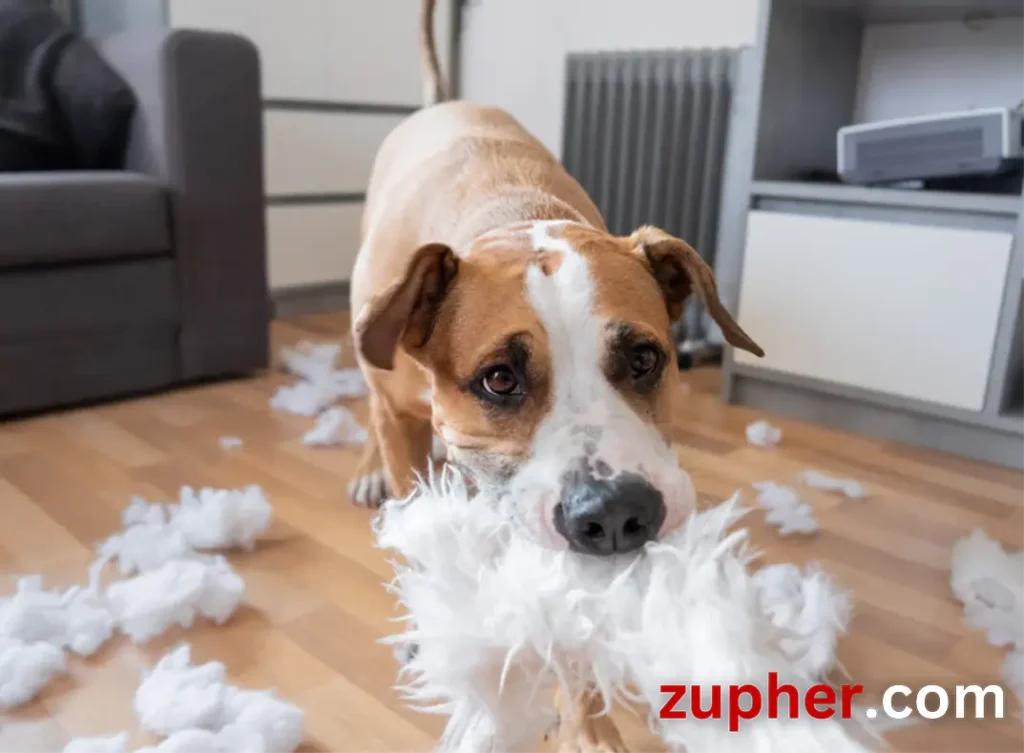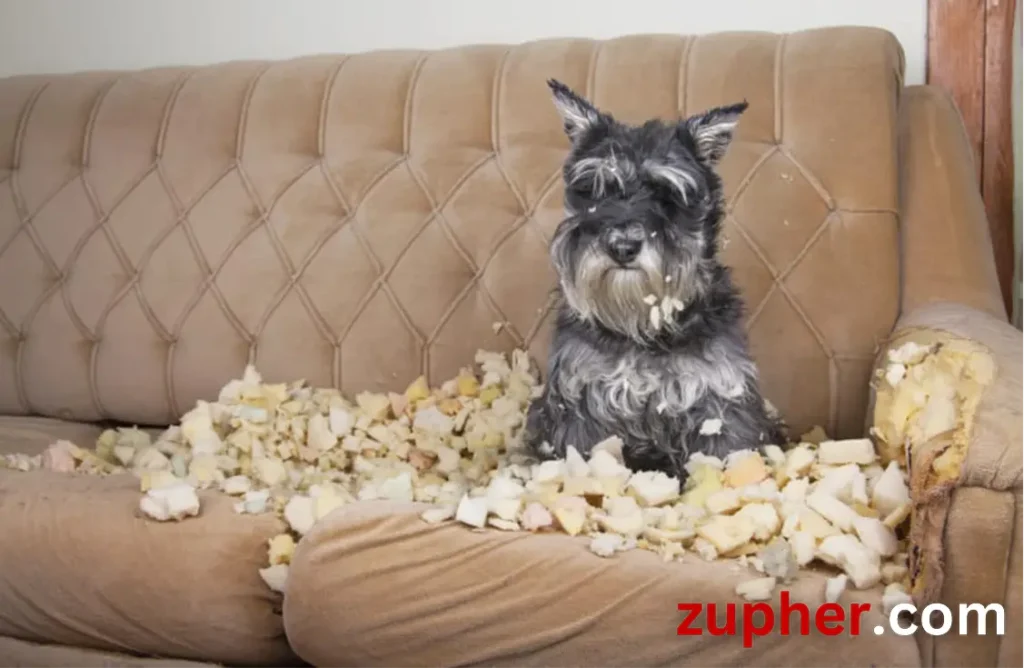Why Does My Dog Chew Everything and How Do I Stop It?

Introduction
A. Brief Overview of the Issue: Dogs chewing everything in sight
Dogs chewing on anything they can find is a common problem many pet owners face. From shoes to furniture, it seems like nothing is safe from their teeth.
B. Importance of Addressing This Behavior: Preventing destruction, ensuring pet safety, maintaining household harmony
Dealing with this behavior is vital because it can save your belongings from getting ruined, keep your pet out of harm’s way, and maintain peace at home.
C. Thesis Statement: Understanding the reasons behind canine chewing habits and implementing effective solutions are crucial for pet owners.
Pet owners need to understand why dogs chew things and how to stop it. By figuring this out and taking action, you can make life better for both you and your furry friend.

Understanding Canine Chewing Behavior
A. Natural Instincts: Exploring the world through chewing
Dogs have a natural urge to explore their surroundings, and chewing is one way they do this. It’s like how we use our hands to touch and feel things. Dogs use their mouths to learn about objects.
B. Teething Phase: Normal developmental stage for puppies
Just like human babies, puppies go through a teething phase. During this time, their gums might feel itchy or uncomfortable, so they chew to relieve the discomfort. It’s perfectly normal, but it can be a bit messy!
C. Boredom and Anxiety: Psychological reasons for excessive chewing
Sometimes, dogs chew because they’re bored or anxious. Imagine being stuck at home with nothing to do—it can make you restless! Dogs feel the same way. Chewing helps them release pent-up energy or cope with stress.
D. Breed Tendencies: Certain breeds have a higher propensity for chewing
Certain breeds of dogs have a greater tendency to chew than others. For example, breeds like Labrador Retrievers and German Shepherds are known to be big chewers. It’s in their genes! Understanding your dog’s breed can give you insight into their chewing habits.

Potential Consequences of Uncontrolled Chewing
A. Destruction of Personal Belongings: Furniture, shoes, electronic devices
When dogs chew on things they shouldn’t, it can wreck your stuff! Imagine coming home to find your favorite shoes torn apart or your sofa with big bite marks. It’s not fun and can cost you a lot of money to replace or repair.
B. Health Hazards: Ingestion of toxic substances, choking hazards
Chewing on random objects can be risky for your dog’s health. Sometimes they might swallow something harmful, like chemicals or small pieces that can get stuck in their throat. This can lead to serious health problems or even choking accidents.
C. Behavioral Issues: Aggression, anxiety, disobedience
Uncontrolled chewing can mess with your dog’s behavior. They might become more aggressive or anxious, especially if they’re scolded for chewing. This can also make them more disobedient because they don’t understand why they’re being punished. It’s important to address chewing issues before they spiral into bigger behavioral problems.

Identifying the Root Causes
A. Observation and Analysis: Monitoring the dog’s behavior and environment
To figure out why your dog is chewing everything, it’s important to watch them closely. Pay attention to when and where they chew, and what they chew on. This can give clues about what’s triggering the behavior.
B. Consulting with a Veterinarian: Assessing medical issues that may contribute to excessive chewing
Sometimes, there might be medical reasons behind your dog’s chewing habit. Taking them to the vet for a check-up is a wise decision. The vet can rule out any health problems that might be causing the chewing.
C. Evaluating Environmental Factors: Stressors, lack of stimulation, changes in routine
Changes in your dog’s environment can affect their behavior. Things like stress, boredom, or changes in their daily routine can make them more likely to chew on things. Take a look at what’s going on in their surroundings to see if anything might be causing stress or boredom.

Effective Strategies to Stop Excessive Chewing
A. Providing Appropriate Chewing Alternatives: Durable toys, dental chews
Give your dog something safe and fun to chew on instead of your stuff. Durable toys and special dental chews can keep their teeth busy and satisfy their chewing urges.
B. Environmental Enrichment: Interactive games, puzzle feeders, regular exercise
Keep your dog mentally and physically stimulated to prevent boredom. Interactive games, puzzle feeders, and plenty of exercise can help keep them entertained and less likely to chew out of frustration.
C. Positive Reinforcement Training: Rewarding desirable behaviors, discouraging destructive chewing
Teach your dog what they’re allowed to chew on by praising them when they use their toys and redirecting them when they go for something they shouldn’t. Positive reinforcement helps them learn what’s okay and what’s not.
D. Consistency and Patience: Establishing routines and boundaries, avoiding punishment-based methods
Be patient and consistent in training your dog. Stick to your rules and routines, and avoid punishing them for chewing. Punishment can make them afraid or confused, so it’s better to focus on positive reinforcement and redirection.
Case Studies and Success Stories
A. Real-life Examples of Dogs Overcoming Chewing Problems
Imagine hearing about dogs just like yours who stopped chewing everything in sight. These stories show that dogs can change their behavior with the right help and training.
B. Testimonials from Pet Owners Who Implemented Successful Interventions
Listen to what other pet owners have to say about how they tackled their dog’s chewing issues. Their experiences can give you hope and ideas for what might work for your furry friend.
C. Insights into the Effectiveness of Different Strategies in Diverse Scenarios
Learn about which strategies worked best for different dogs in various situations. Every dog is unique, so understanding what worked for others can help you tailor your approach to fit your dog’s needs.
Conclusion
A. Recap of Key Points: Understanding the reasons behind canine chewing behavior, consequences of uncontrolled chewing, and effective strategies for prevention
Remember, it’s crucial to know why your dog chews, what problems it can cause, and how to stop it. By understanding these points, you’re better equipped to tackle the issue.
B. Importance of Proactive Management: Addressing the issue early to prevent long-term problems
Don’t wait until the chewing becomes a big problem. Start managing it as soon as you notice it to avoid bigger issues down the road. Being proactive can save you and your pet a lot of stress.
C. Encouragement for Pet Owners: With patience, consistency, and the right approach, excessive chewing habits can be successfully managed and corrected.
Don’t lose hope! Managing your dog’s chewing habits might take time and effort, but with patience, sticking to your plan, and finding the right strategies, you can help your furry friend overcome this habit and lead a happier, chew-free life.
People also ask
How do I train my dog not to chew on everything?
Train your dog by providing appropriate chew toys and redirecting them when they chew on inappropriate items.
What can I give my dog to stop chewing everything?
Give your dog durable chew toys and special dental chews to redirect their chewing behavior.
How do you punish a dog for chewing on things?
Avoid punishment; instead, use positive reinforcement to reward good behavior and redirect inappropriate chewing.
How do I get my dog to stop destroying everything?
Use consistent training, provide mental and physical stimulation, and offer appropriate chew toys to prevent destructive chewing.
What age do dogs stop chewing?
Dogs typically stop teething and chewing excessively around 6 to 9 months of age.
Do dogs grow out of chewing?
Yes, as dogs mature and their teething phase ends, they often grow out of excessive chewing habits.



